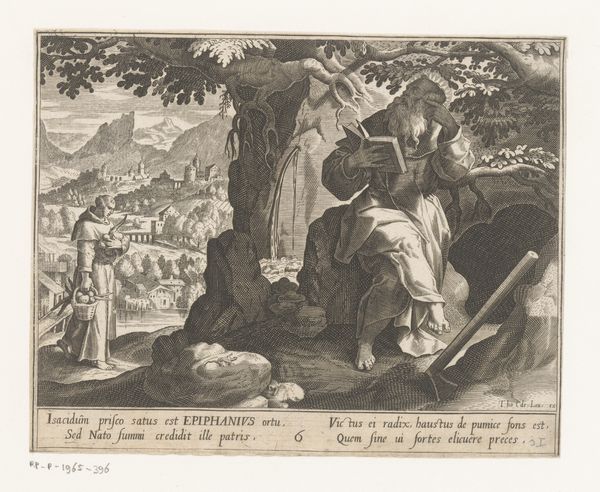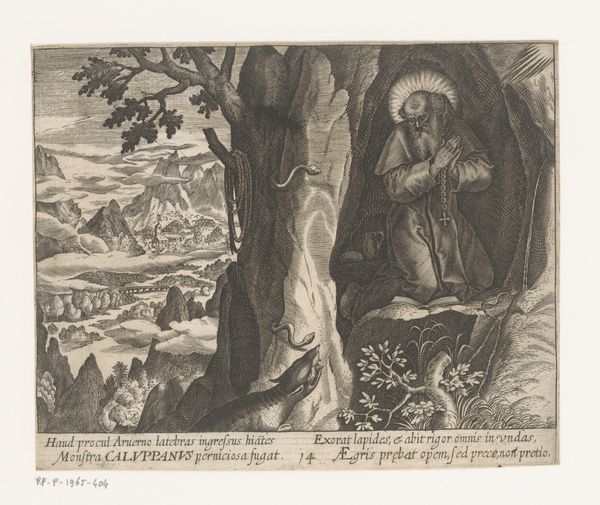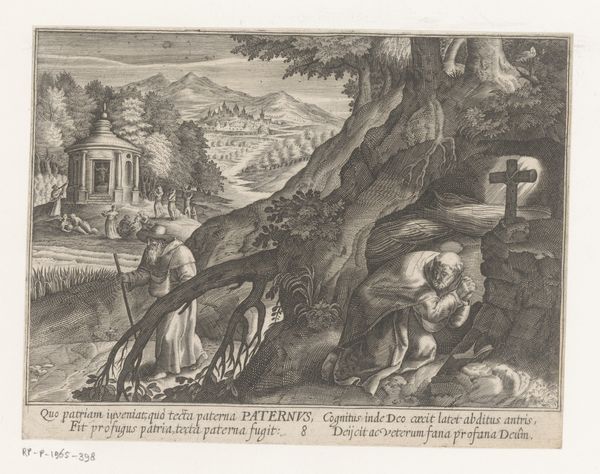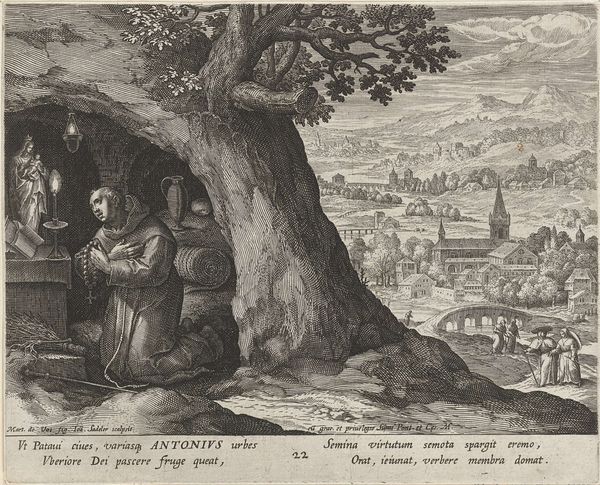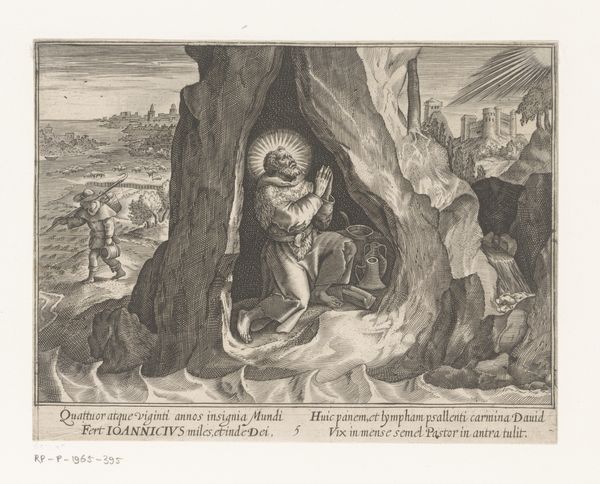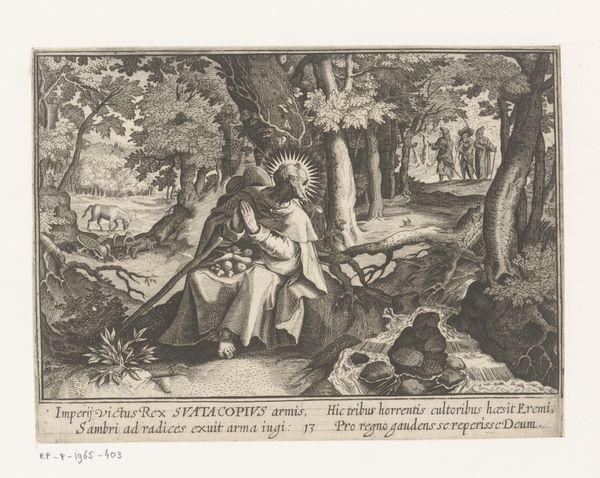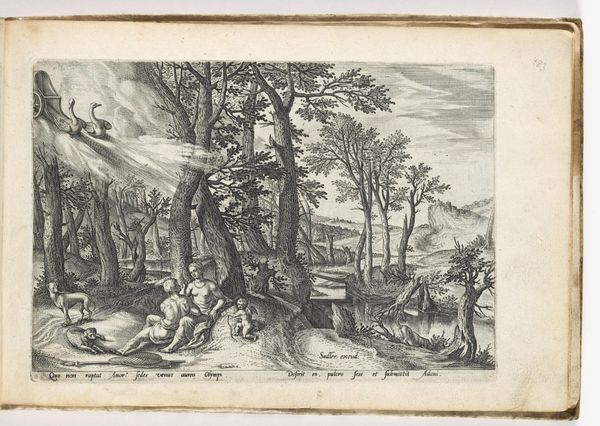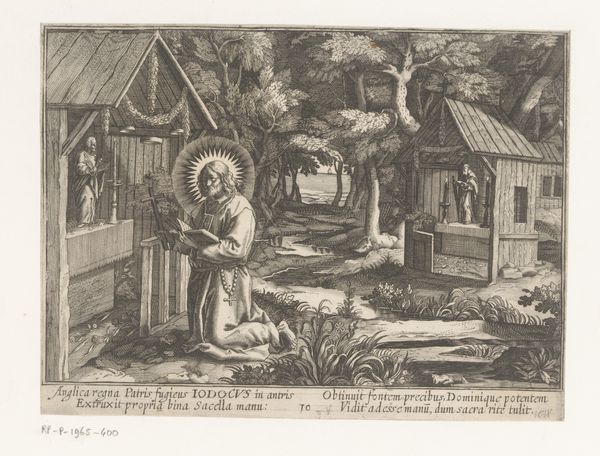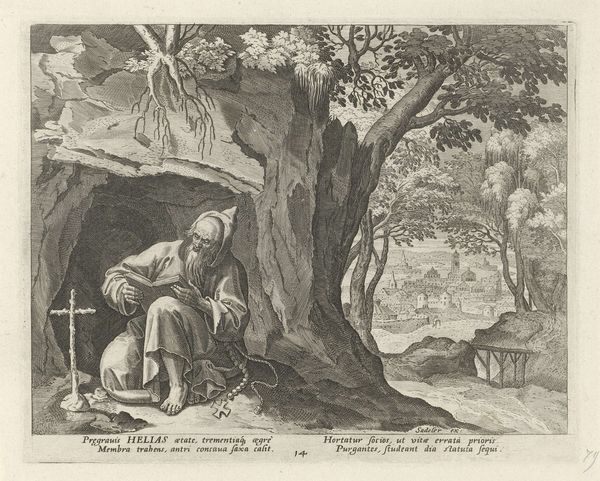
print, engraving
# print
#
old engraving style
#
landscape
#
history-painting
#
engraving
Dimensions: height 144 mm, width 187 mm
Copyright: Rijks Museum: Open Domain
Editor: This is "Saint Anthony of Padua as a Hermit" by Thomas de Leu, created after 1598. It's an engraving, and what strikes me most is the contrast. We see Saint Anthony kneeling in this small, dark cave, and then in the distance there's a vast, bright landscape. What do you see in this piece, especially regarding this duality? Curator: That contrast you noticed is key, because it emphasizes a dialogue between the individual and the world, especially during this period. Saint Anthony's retreat into the cave becomes a symbolic act of resistance against societal norms. His hermitage represents not just religious devotion, but also a conscious separation from the urban, almost a critique of burgeoning city life, and perhaps its inequalities. Consider the text at the bottom; how might his actions "sow seeds of virtue"? Editor: So his choice of isolation isn’t just about piety, but also about setting an example? Is the landscape a depiction of temptation that he's resisting, perhaps? Curator: Perhaps both resistance and resilience. The landscape holds social structures – are these things that support a righteous life or distract from it? By turning away from the material world, he advocates for a different kind of value system. His act of praying becomes a political statement. What might it say about contemporary struggles with capitalism, consumerism and urban detachment? Editor: I never thought of a historical religious scene having such a contemporary edge! So his personal piety translates into a broader social critique? Curator: Exactly. And by recognizing that, we engage with how the work resonates with modern questions of identity, place, and resistance. Editor: Thank you! That’s given me a lot to think about in terms of connecting this older artwork with modern social issues.
Comments
No comments
Be the first to comment and join the conversation on the ultimate creative platform.
